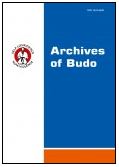2017, Volume 13
Active recovery vs sodium bicarbonate: impact on lactic acid removal following a specific judo effort
Nebojša Trajković1, Josip Šančić2, Adrian Scruton3, Rebeka Prosoli4, Lovro Štefan4, Goran Sporiš4, Dejan Madić5
1Individual Sports, Faculty of Physical Education and Sport, Novi Sad, Serbia
2Judo, Judo club Samobor, Samobor, Croatia
3Health science, Faculty of Science & Technology, Cambridge , UK., Cambridge, United Kingdom
4Kinesiology, Faculty of Kinesiology, Zagreb, Zagreb, Croatia
5Individual Sports, Faculty of Physical Education and Sport, Novi Sad, Novi Sad, Serbia
Author for correspondence: Nebojša Trajković; Individual Sports, Faculty of Physical Education and Sport, Novi Sad, Serbia; email: nele_trajce[at]yahoo.com
Full text
Abstract
Background and Study Aim: Combat sports such as judo are known to be extremely high demanding which can result with a high level of lactic acid. Because of that recovery is a crucial part of the preparation for competitive judo. The aim of this study was the effectiveness of active recovery and sodium bicarbonate to the removal of lactic acid after a judo match simulation (JMS) and Specific Judo Fitness Test (SJF).
Material and Methods: Participants were 10 judo athletes (6 male and 4 female), age 18-20 years, from Judo Club Samobor (Samobor, Croatia). In this study, the SJFT was used as well as JMS with a duration of 4 minutes.
Results: There are significant differences in all lactate levels between the active recovery and baking soda variables during SJFT and JMS. In all measurements, lactate levels were significantly higher (p<0.001) when athletes used baking soda intake versus active recovery.
Conclusions: Overall results of this research suggest that levels of lactic acid were significantly lower when athletes used active recovery versus sodium bicarbonate intake This may be due to the difference in the effectiveness of the aerobic system during active recovery in which soda bicarbonate removes the excess hydrogen ions.
Key words: randori, HR, judo match simulation, ippon-seoi-nage, Specific Judo Fitness Test




